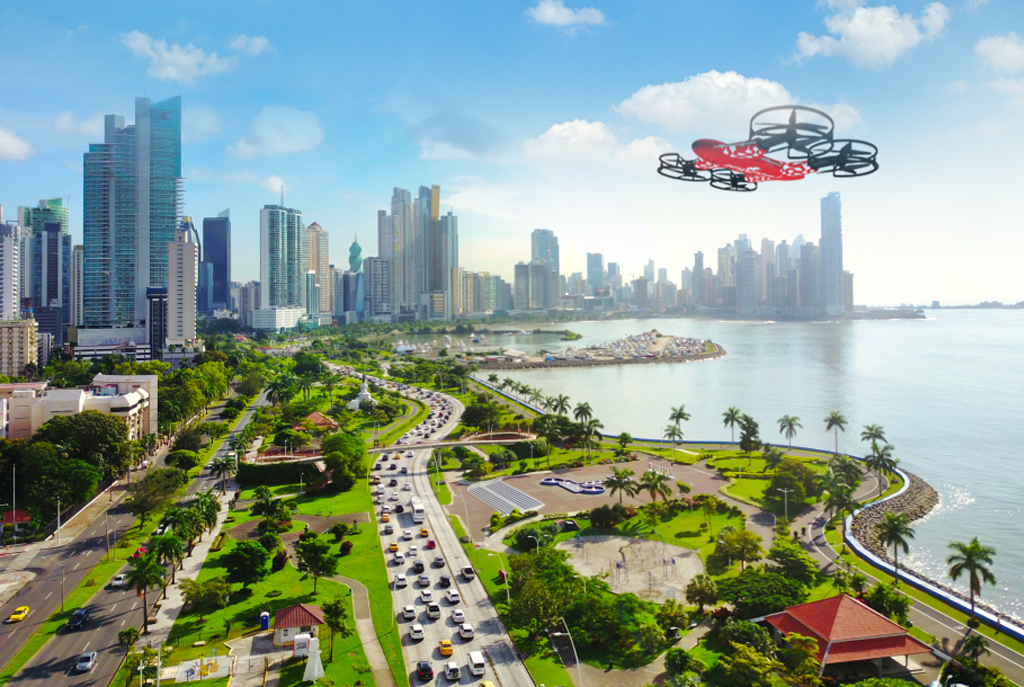September 7, 2022
By Dr. Shaun Passley, Founder, ZenaTech
The call for sustainable practices in the field of agriculture is not new, but it becomes more urgent with each passing year. Those who answer the call commit to tackling a complex challenge. In essence, sustainable farming demands more work be done with less energy. It requires a greater degree of prudence and precision, while continuing to support profitability. It seeks balance between providing the needs for today and securing the needs of tomorrow.
To meet these challenges, many have turned to technological innovations. One of the most promising of those innovations to take flight in recent years is the unmanned aerial vehicle, more commonly known as UAVs or drones. Seek out the latest news on innovations in agriculture and you will repeatedly find references to leveraging drones to increase sustainability.
How drones are being used in agriculture
The ways in which drones can be used to support agricultural practices are virtually limitless. From utilizing simple drones equipped with cameras that provide aerial views of farmlands to employing complex drones equipped with robotic arms that carry out remote planting operations, drones dramatically extend the capability of the modern farmer.
Through simple remote data collection, drones empower a variety of efficiencies in farming. Field conditions can be assessed, alerting farmers to compromised pasture fences, malfunctioning irrigation devices, and crops that are diseased or in distress. This data collection can be scheduled and automated, providing regular monitoring with far less resources than required by traditional agricultural processes.
Pesticide and fertilizer distribution provide a telling illustration of the value of drones in agriculture. Maximizing and maintaining high harvest yields requires frequent irrigation and fertilization. Customizable drones allow for attachments that enable farmers to connect fertilizer sprayers and remotely control the release of aerial sprays. The same drones can be used to capture precise plant measurements for assessing crop health and recalculating the amount of pesticides required on an ongoing basis. Tackling these tasks with drones costs far less than employing traditional crop dusters, while also reducing the risks to pilots and workers on the ground.
How drones increase sustainability in agriculture
Increasing harvest yields is one of the primary benefits that drone technology brings to the area of agricultural sustainability. By leveraging the power of automation and digitalization, drones streamline crop inspection and assessment efforts. Regular flights utilize conventional and multispectral camera systems to capture data on crop health, which can be relayed to databases that track plant development. Problems including disease, stress, and growth retardation can be quickly identified and addressed before they significantly impact crop yield.
Drones can also be used to increase the efficiency of irrigation. Improving water management is cited as one of the top concerns of agriculture sustainability. Drone technology can be used to create 3D surface models of farmland, allowing for more efficient irrigation through a greater understanding of the way in which water is flowing. Through the use of multispectral sensors, drones can be used to provide real-time, accurate, and vivid images for assessing plant health, thus allowing irrigation adjustments that promote optimal plant health.
The reduction of chemical fertilizer runoff, which is also cited as a top sustainability concern, can also be accomplished through better irrigation management. With too much irrigation, fertilizers can be carried into streams and lakes where they can eventually cause harm to aquatic life or pollute sources of drinking water. The data provided by drones can reveal where water and fertilizers are being overused in a way that leads to runoff.
How AI is increasing the potential for sustainable farming
Understanding the way in which artificial intelligence (AI) can impact agriculture requires an understanding of computer vision. The digital images that drones capture — whether through traditional, multispectral, or infrared photography or video — provide a wealth of information. Optimizing the use of drones, however, requires in-depth analysis of those images.
Computer vision is a type of AI that allows computers to interpret digital images without human assistance. After interpreting, they can take action or make recommendations based on the images.
In basic terms, drones can use computer vision to improve their navigation. They can assess obstacles and make decisions about how to navigate around them. They can identify targets and engage with them in the most effective way. By employing computer vision, drones are able to perform without human operators, achieve longer flight times, accomplish broader coverage, and reduce energy demands.
In terms of agricultural sustainability, drones can use computer vision for detection, classification, and predictions that contribute to the ability to practice sustainable agriculture. Applying this type of AI allows drones to use data collected via spectral imaging to detect plant stress that is invisible to the naked eye, triggering adjustments to irrigation, fertilization, or pest prevention, as well as providing assessments of crop yield.
The technology that we have developed at ZenaDrone can be used to generate a comprehensive map that identifies where diseased plants have been detected, allowing them to be removed before the problem spreads to healthy plants. It leverages AI to empower low-altitude, automated drone flights and to convert multispectral data to actionable agricultural insights.
AI also can be used to assist with plant counting, leveraging computer vision to allow drones to recognize and keep track of the quantity of certain plant species. If an increase in weeds threatens yield or growth at a certain point in the season does not meet expectations, appropriate action can be taken.
As the fundamentals of drone technology are supplemented with AI, the result is a new generation of tools that bring significant benefits to agriculture, especially in the area of sustainability. AI-empowered drones allow for crops to be planned, planted, monitored, cared for, and optimized with fewer resources than traditional farming requires, all in ways that reduce the impact on the environment.
###
ABOUT THE AUTHOR:

Dr. Shaun Passley holds numerous masters degrees from DePaul University, Benedictine University, and Northwestern University, and has a PhD in Business Administration. In addition to founding ZenaTech, he is also Chairman & CEO of Epazz, Inc. — an enterprise-wide cloud software company — and the manufacturing company Ameritek Ventures. ZenaDrone is an entirely bootstrapped venture that is aiming to help the agri sector in Ireland close its emerging labor gap through automation.
*The content put forth by Global AgInvesting News and its parent company HighQuest Partners is intended to be used and must be used for informational purposes only. All information or other material herein is not to be construed as legal, tax, investment, financial, or other advice. Global AgInvesting and HighQuest Partners are not a fiduciary in any manner, and the reader assumes the sole responsibility of evaluating the merits and risks associated with the use of any information or other content on this site.

Let GAI News inform your engagement in the agriculture sector.
GAI News provides crucial and timely news and insight to help you stay ahead of critical agricultural trends through free delivery of two weekly newsletters, Ag Investing Weekly and AgTech Intel.




